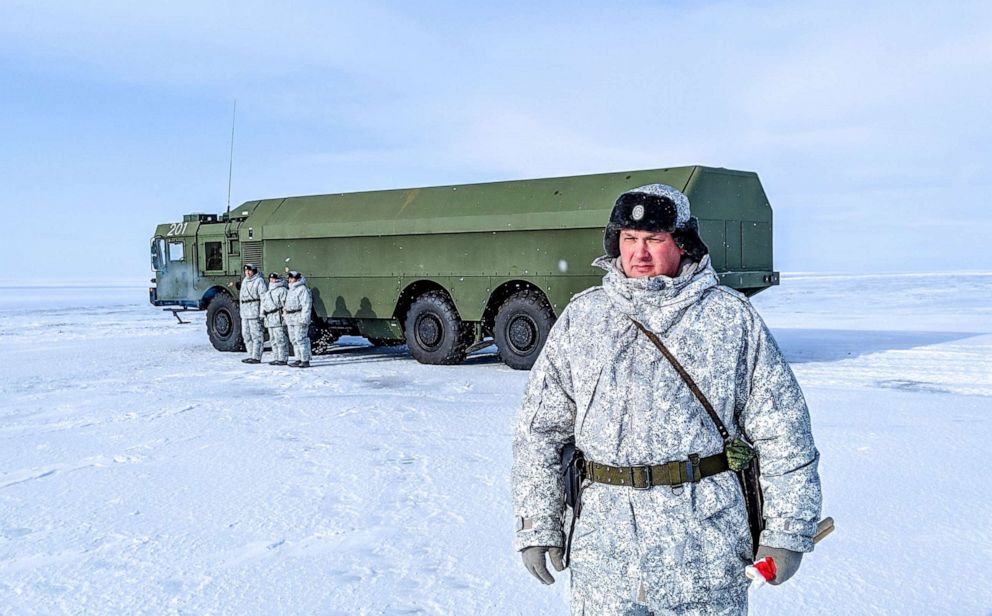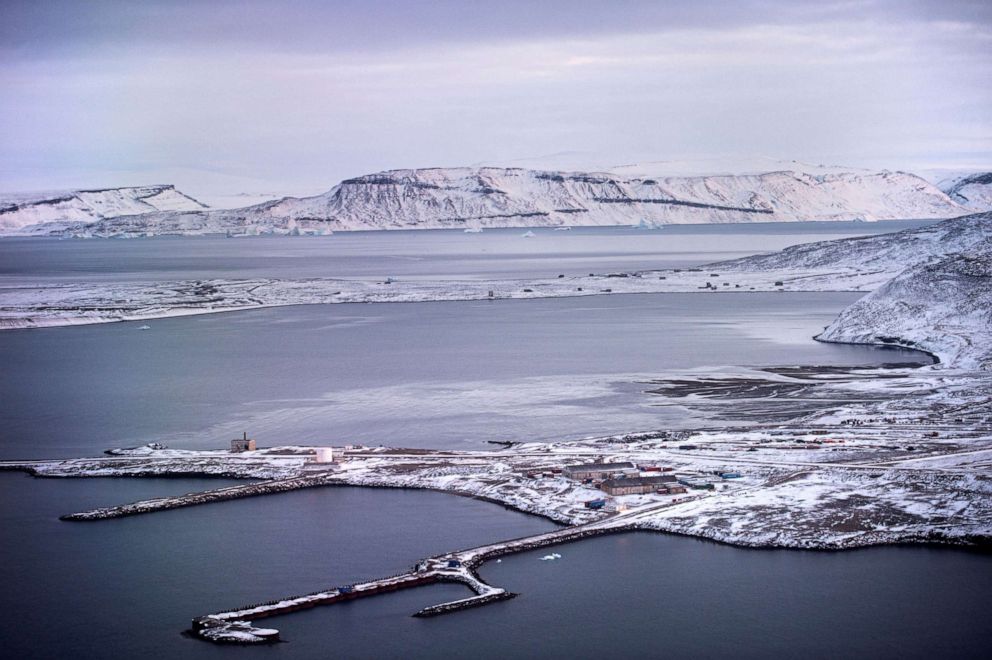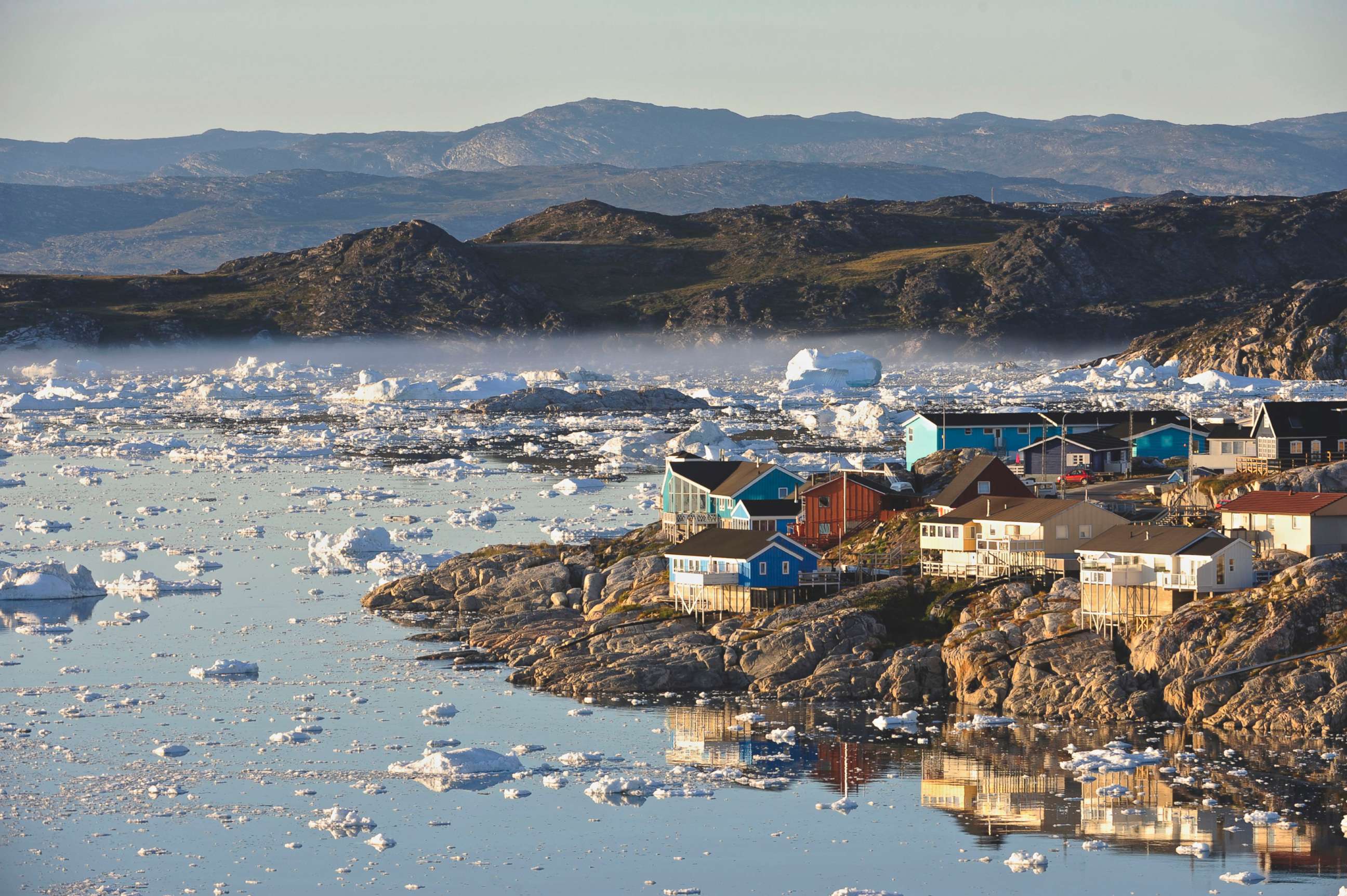After Trump tried to buy Greenland, US gives island $12M for economic development
The U.S. sees financial, strategic openings as its ice sheet dangerously melts.
It isn't President Donald Trump's opening bid. But his administration announced Thursday it will provide a $12 million aid package to Greenland for economic development, raising eyebrows in Denmark, which has sovereignty over the island, and firing off a volley in the emerging competition with Russia and China for power in the Arctic.
The world's largest island, Greenland is home to the only permanent ice sheet outside of Antarctica, covering four-fifths of its 836,000 square miles. As the planet's temperature rises and its climate changes, that ice sheet has seen historic melting, potentially endangering life on Earth.
But with that melt, the Trump administration sees an important strategic opportunity, racing to push back on Russia's growing military presence in the Arctic and China's economic push into the region.
In what was mistaken for a joke at first last August, Trump said his administration was looking into purchasing Greenland, which may hold vast oil or mineral resources beneath that ice sheet and sits at a critical location at the intersection of the Atlantic Ocean's northernmost stretches and the Arctic Ocean.

His offer was rebuffed by Greenlandic and Danish officials. Greenland is a territory of Denmark with limited self-government -- its own parliament and premier, but no foreign policy. After Danish Prime Minister Mette Frederiksen dismissed the idea of a sale as "absurd," Trump set off a diplomatic incident by canceling a state visit to the NATO ally where he was supposed to be hosted by the country's Queen Margrethe II.
A senior State Department official said, "There's no plan or interagency process underway involving the purchase of Greenland."
Instead, this $12.1 million assistance is for "sustainable" economic development, the official said, focused in particular on developing energy and natural resources, expanding educational exchange, and boosting Greenland's fledgling tourism industry.
"This good news confirms that our work on building a constructive relationship with the United States is fruitful. It is positive that the increased cooperation between Greenland and the U.S. is reflected in tangible results in the form of funding for projects in Greenland," Greenlandic premier Kim Kielsen said in a statement Thursday.
The U.S. will also open a consulate in Greenland later this summer, per the senior State Department official, for the first time since 1953. One U.S. diplomat currently based in Copenhagen is scheduled to take up permanent residence in the capital Nuuk in late May or early June, with a second American joining him in summer or later this year and five locally employed staff being hired.
"It's good old fashioned diplomatic tradecraft designed to enhance our engagement. Presence matters. It's easier to have good relations and to communicate when you are someplace on the ground. And it's smart politics for our allies and the people of the United States," said the senior official, adding there are plans for a permanent facility, but for the time being the U.S. diplomatic presence will be hosted at a Danish military base.

Russia has dramatically expanded its military footprint in the Arctic Circle, with new or refurbished military bases, increased operations and military exercises, and newly deployed missile systems and Arctic brigades. While China has no physical presence in the Arctic, it declared itself a "near-Arctic state" in 2018 and launched its "Polar Silk Road' plan to invest in natural resources an shipping routes throughout the region.
Secretary of State Mike Pompeo has renewed focus on U.S. involvement in the region, visiting Iceland and scheduling a visit to Greenland, only to cancel last minute to focus on Iran policy. But he has called for stronger engagement with the Arctic Council, the eight countries with territory in the Arctic Circle -- Canada, Denmark, Finland, Iceland, Norway, Russia, Sweden, and the U.S.
The U.S. already has Thule Air Base on Greenland's northwest coast, the U.S. military's northernmost base used primarily for missile warning, space surveillance, and scientific research assistance.
Most research in Greenland is focused on its ice sheet and its historic destruction. Last summer saw a dramatic melting of Greenland's ice sheet with a near-record melt rate and the northern part of the island's largest melt, according to a new study, which blamed in large part a high pressure zone that remained over the island for an unusually long period of time and could repeat itself in the future and threaten even greater melt.
Importantly, after the 2019-2020 winter Arctic sea ice reached one of its lowest maximum extents, according to the U.S. National Snow and Ice Data Center, in its 42-year satellite record.
Greenland's melt is so dangerous because its directly tied to rising sea levels. A study published in the Proceedings of the National Academy of Sciences one year ago found that the melting of its ice sheet has contributed to more than a half-inch of rising ocean waters since 1972, making it the largest contributor of new water into the ocean every year.

The senior State Department official said nothing in the new aid package will specifically work to offset that melt, but the U.S. will continue to fund research projects across the island to study it.
Instead, the new funding will allow U.S. agencies to work with the Greenlandic Ministry of Mineral Resources and Ministry of Industry, Energy, and Research to develop its natural resources in a "competitive" and "transparent" way and ward off corruption or poor environmental practices, the senior official said, adding U.S. investment was better and safer than Chinese funding for the mineral extraction that they said was inevitable.
"This is something that I think is going to have a positive impact on the development of those sectors in Greenland and ensure that when they do develop -- and they will develop -- they'll develop in a manner that's consistent with the best practices," they said Wednesday during a briefing previewing the new assistance.
While the aid was welcomed by Greenland's government, the offer has angered some Danish lawmakers, still bothered by Trump's initial comments and abrupt cancellation last summer.
Financial aid "is something you say about third-world countries when you provide development aid. But Greenland is not a developing country. It is a Western democracy. I think it's reprehensible," Soeren Espersen of the opposition Danish People’s Party told Danish broadcaster DR, according to the Associated Press.
The senior State Department official dismissed those criticisms as part of a "democratic society with a broad range of political views," adding that the package was developed "in consultation with the Kingdom of Denmark and the government of Greenland."




